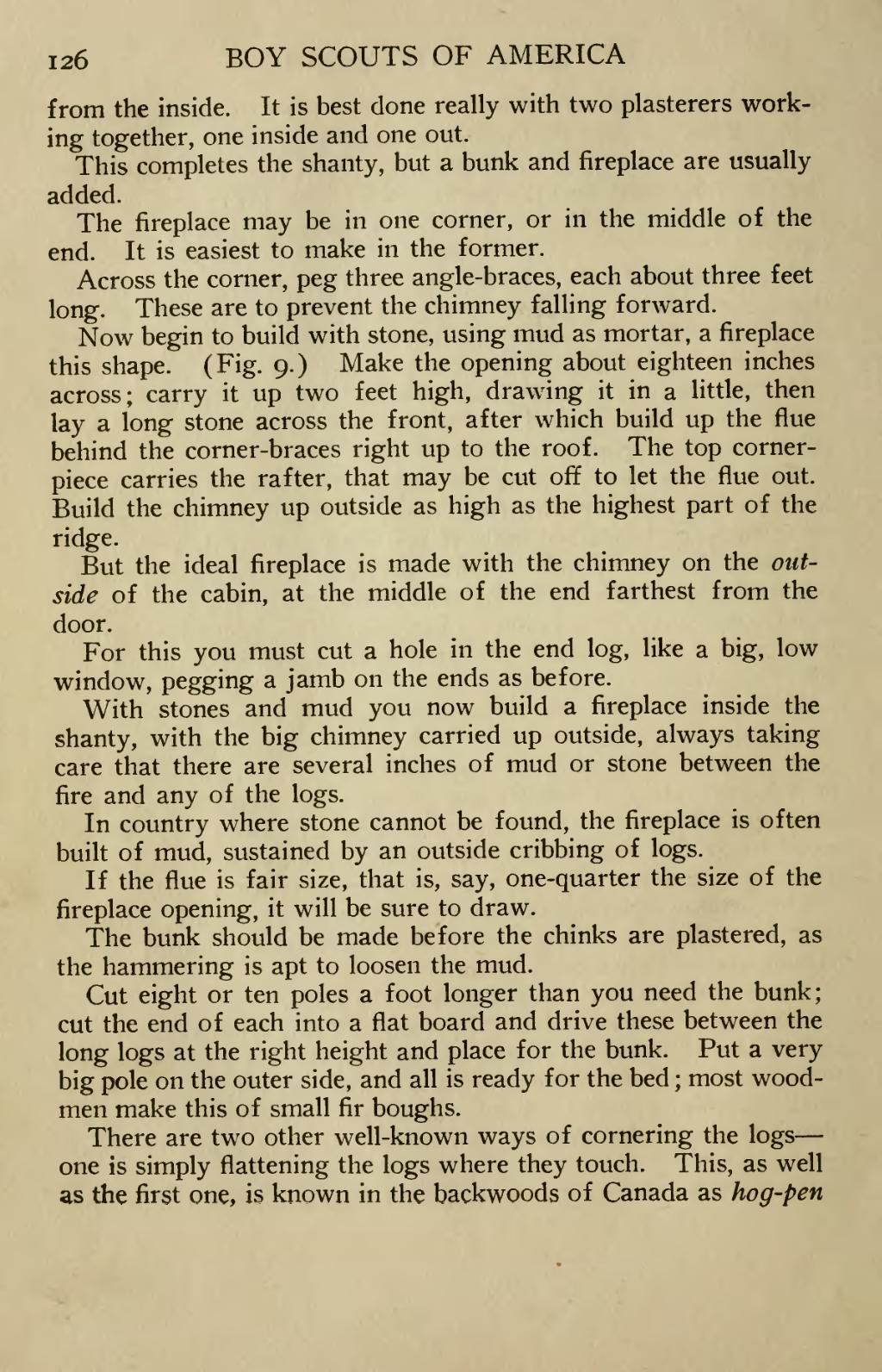126 BOY SCOUTS OF AMERICA from the inside. It is best done really with two plasterers work- ing together, one inside and one out. This completes the shanty, but a bunk and fireplace are usually added. The fireplace may be in one corner, or in the middle of the end. It is easiest to make in the former. Across the corner, peg three angle-braces, each about three feet long. These are to prevent the chimney falling forward. Now begin to build with stone, using mud as mortar, a fireplace this shape. (Fig. 9.) Make the opening about eighteen inches across; carry it up two feet high, drawing it in a little, then lay a long stone across the front, after which build up the flue behind the corner-braces right up to the roof. The top corner- piece carries the rafter, that may be cut off to let the flue out. Build the chimney up outside as high as the highest part of the ridge. But the ideal fireplace is made with the chimney on the out- side of the cabin, at the middle of the end farthest from the door. For this you must cut a hole in the end log, like a big, low window, pegging a jamb on the ends as before. With stones and mud you now build a fireplace inside the shanty, with the big chimney carried up outside, always taking care that there are several inches of mud or stone between the fire and any of the logs. In country where stone cannot be found, the fireplace is often built of mud, sustained by an outside cribbing of logs. If the flue is fair size, that is, say, one-quarter the size of the fireplace opening, it will be sure to draw. The bunk should be made before the chinks are plastered, as the hammering is apt to loosen the mud. Cut eight or ten poles a foot longer than you need the bunk; cut the end of each into a flat board and drive these between the long logs at the right height and place for the bunk. Put a very big pole on the outer side, and all is ready for the bed ; most wood- men make this of small fir boughs. There are two other well-known ways of cornering the logs — one is simply flattening the logs where they touch. This, as well as the first one, is known in the backwoods of Canada as hog-pen
Stránka:roll 1910.djvu/142
Z thewoodcraft.org
Tato stránka nebyla zkontrolována
